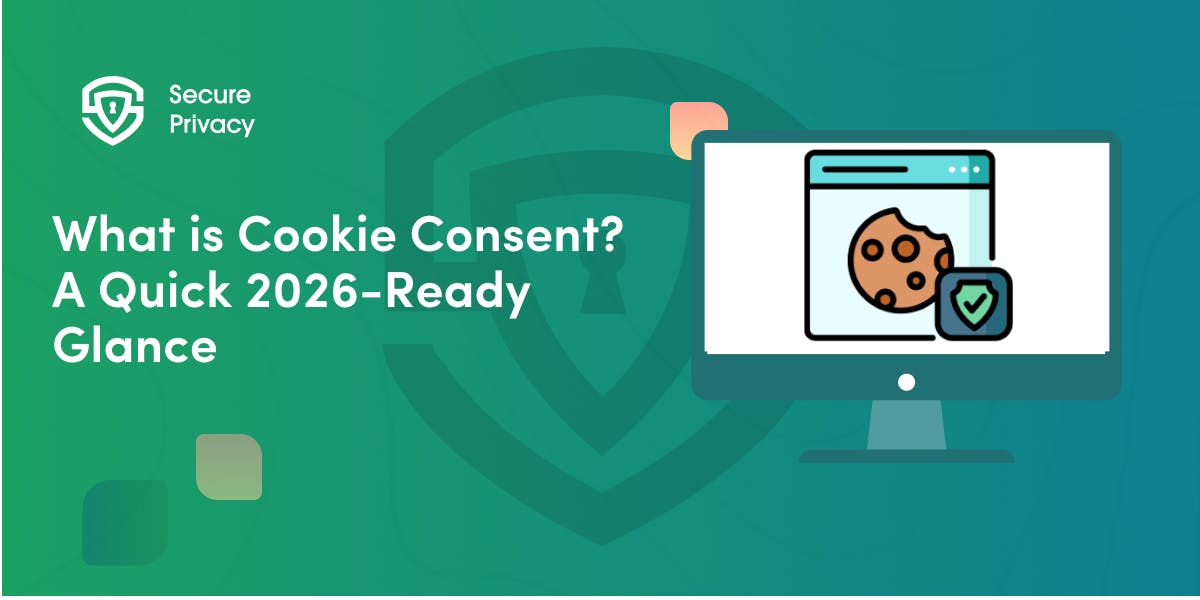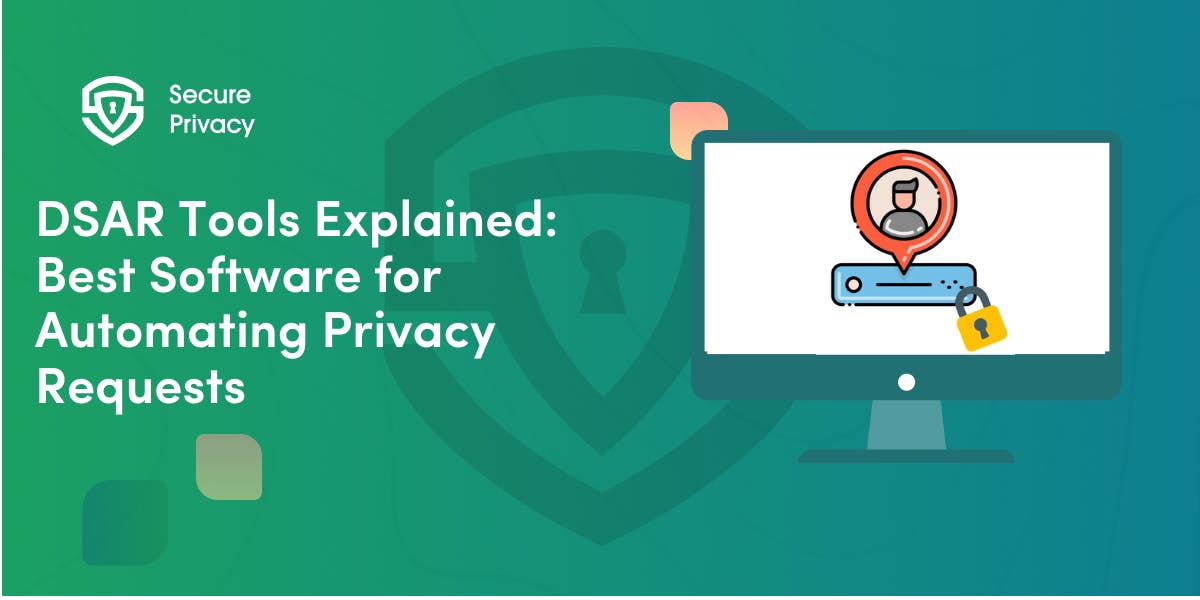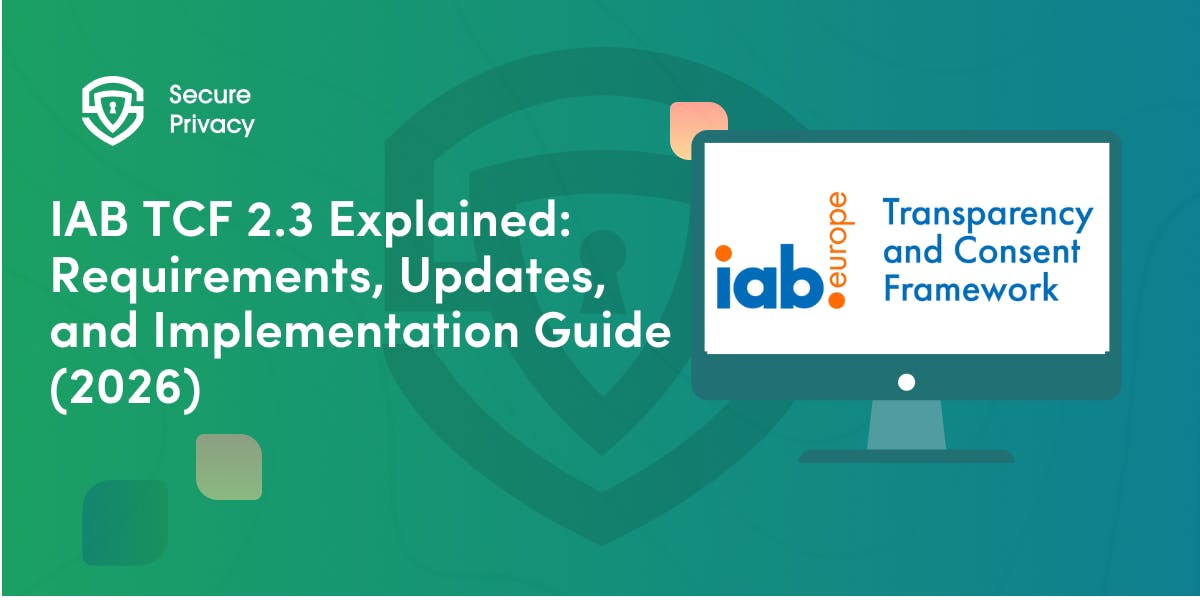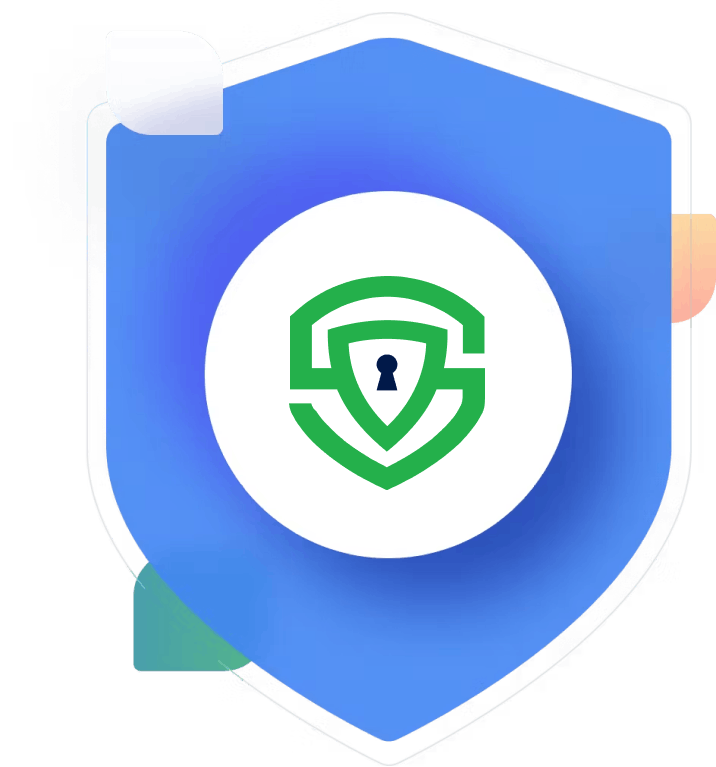School Data Governance Software: Compliance, Security & Privacy for K-12 in 2025
School districts are drowning in student data while struggling to protect it. Every day, sensitive educational records flow between learning management systems, third-party EdTech vendors, and administrative platforms — often without proper oversight or compliance tracking.
School data governance software has become essential for K-12 institutions navigating complex privacy regulations while maintaining the digital learning environments students need. In this comprehensive guide, you'll learn what school data governance platforms offer, why they're critical for FERPA and COPPA compliance, and how to select the right solution for your district's unique needs.
What Is School Data Governance Software?
School data governance software is a specialized platform designed to help K-12 institutions manage, protect, and monitor student data across their entire digital ecosystem. Unlike generic data governance tools built for corporate environments, these solutions understand the unique challenges of educational settings.
These platforms centralize oversight of student records, parent consent management, and third-party vendor relationships. They automate compliance workflows for education-specific regulations like FERPA (Family Educational Rights and Privacy Act) and COPPA (Children's Online Privacy Protection Act).
The key difference from general data governance tools lies in their education-focused features. School data governance software includes built-in templates for educational privacy impact assessments, pre-configured workflows for parental access requests, and specialized vendor vetting processes designed for EdTech companies.
Most importantly, these solutions bridge the gap between complex federal regulations and day-to-day school operations. They translate legal requirements into actionable workflows that teachers, administrators, and IT staff can actually follow.
Why Schools Need Data Governance in 2025
The digital transformation in education has accelerated dramatically. Schools now use an average of 1,449 different EdTech tools, each potentially accessing sensitive student information. This expansion has created unprecedented privacy risks and compliance challenges.
Cyber threats targeting educational institutions have surged by 18% since 2023. Ransomware attacks on school districts regularly expose thousands of student records, while data breaches cost the education sector an average of $4.45 million per incident.
Parents are increasingly aware of their children's digital privacy rights. They're demanding transparency about how schools collect, use, and share student data. Districts that can't provide clear answers face mounting pressure from families and advocacy groups.
The regulatory landscape continues to evolve. FERPA enforcement has intensified, with the Department of Education issuing new guidance on "reasonable methods" for protecting student privacy. COPPA violations now carry penalties up to $51,744 per affected child. State-level laws like California's SOPIPA and New York's Education Law 2-d add additional compliance layers.
Schools that lack proper data governance face significant risks beyond financial penalties. They risk losing community trust, facing litigation, and potentially losing access to federal funding programs that require demonstrated privacy protections.
Key Features of School Data Governance Software
Centralized Student Data Inventory
Modern school data governance platforms automatically discover and catalog all student data across district systems. They map data flows between student information systems (SIS), learning management systems (LMS), and third-party applications.
These inventories provide real-time visibility into what data exists, where it's stored, and who has access. Administrators can quickly identify data that should be archived or deleted based on retention policies.
Consent and Permission Management
Robust consent management features streamline the complex process of obtaining and tracking parental permissions. These systems handle everything from field trip consent forms to EdTech app approvals.
The software maintains detailed audit trails showing when consent was obtained, who provided it, and for what specific purposes. This documentation proves invaluable during compliance audits or parent inquiries.
Data Retention & Deletion Workflows
Automated retention policies ensure student data is kept only as long as legally required or educationally necessary. The software can automatically flag records for review and facilitate secure deletion when appropriate.
These workflows help schools comply with "right to erasure" requirements while maintaining necessary academic records for transcripts and special education services.
Vendor & Third-Party Contract Tracking
School data governance platforms maintain comprehensive databases of all EdTech vendors and their data practices. They track which companies access what types of student data and monitor compliance with data processing agreements.
This centralized approach replaces the typical scattered approach where different departments manage vendor relationships independently, often without proper privacy oversight.
Privacy Impact Assessments for EdTech
Built-in assessment templates help schools evaluate new educational technologies before deployment. These tools guide administrators through the process of identifying privacy risks and implementing appropriate safeguards.
The assessments create documentation required by many state laws and provide justification for technology decisions during board meetings or public inquiries.
Incident & Breach Response Logs
Comprehensive incident management features help schools respond quickly and appropriately to potential privacy violations or security breaches. The software guides users through notification requirements and maintains detailed response records.
These logs prove essential for demonstrating due diligence during investigations and help schools refine their privacy practices based on real-world incidents.
Compliance Benefits
School data governance software directly addresses FERPA's requirement for "reasonable methods" to protect student privacy. By implementing systematic controls and monitoring, districts demonstrate they're taking concrete steps to safeguard educational records.
For COPPA compliance, these platforms streamline the complex process of obtaining verifiable parental consent for children under 13. They automate consent renewal processes and maintain the detailed records required for FTC audits.
State-level privacy laws often require schools to conduct privacy assessments before adopting new technologies. Governance platforms provide the templates and workflows needed to complete these assessments efficiently and consistently.
During compliance audits, schools with proper governance software can quickly produce required documentation. Instead of scrambling to gather scattered records, they can generate comprehensive reports showing their privacy practices and controls.
The software also helps schools maintain compliance during staff transitions. When key personnel leave, their privacy knowledge doesn't walk out the door—it's embedded in the platform's workflows and documentation.
How to Choose the Right Tool
Cloud-based solutions offer several advantages for schools, including automatic updates, reduced IT maintenance, and easier scalability across multiple buildings. However, districts with strict data residency requirements may prefer on-premise deployments.
Integration capabilities are crucial. The governance platform must work seamlessly with your existing SIS, LMS, and other core educational systems. Look for solutions that offer pre-built connectors for popular platforms like PowerSchool, Infinite Campus, or Canvas.
Multi-school districts need platforms that can handle complex organizational structures. The software should support different privacy policies across grade levels while maintaining centralized oversight and reporting.
Pricing models vary significantly. Some vendors charge per student, others per building or district. Factor in implementation costs, training expenses, and ongoing support when comparing total cost of ownership.
Staff training and change management shouldn't be underestimated. Choose solutions with intuitive interfaces and comprehensive training programs. The best privacy platform is worthless if staff won't use it consistently.
Real-World Use Cases
A mid-sized district in Texas used their governance platform to discover they had active data sharing agreements with 47 EdTech companies—nearly double what administrators expected. The audit revealed several vendors were accessing more student data than necessary, leading to contract renegotiations that improved privacy protections.
When evaluating a new math intervention app, a California elementary school used their platform's privacy impact assessment template. The evaluation revealed the vendor's data retention policies exceeded state requirements, prompting negotiations for a customized agreement that better protected student privacy.
A parent in Ohio requested access to all data the district had collected about their child. Instead of spending weeks gathering information from multiple systems, staff used the governance platform to generate a comprehensive report within 24 hours, demonstrating transparency and building family trust.
Implementation Roadmap
Phase 1: Needs Assessment begins with cataloging current data practices and identifying compliance gaps. Survey staff about existing privacy challenges and document all third-party vendor relationships. This foundation ensures you select a platform that addresses your specific requirements.
Phase 2: Tool Selection & Vendor Review involves evaluating platforms against your documented needs. Request demonstrations focused on your use cases, not generic product tours. Check references from similar-sized districts in your state to understand real-world implementation challenges.
Phase 3: Rollout and Staff Training should start with a pilot group of power users who can become internal champions. Develop clear policies and procedures that align with the platform's capabilities. Invest heavily in training—successful governance depends on consistent staff adoption.
Phase 4: Continuous Monitoring establishes regular review cycles for vendor agreements, data retention policies, and privacy practices. The governance platform should generate automated reports that help administrators stay ahead of compliance requirements rather than simply react to problems.
School Data Governance Challenges
Budget constraints consistently rank as the top barrier to implementing comprehensive data governance. Many districts struggle to justify privacy investments when facing competing demands for classroom technology and staffing.
Staff capacity and training gaps create ongoing challenges. Privacy governance requires dedicated attention, but most school IT departments are already stretched thin managing daily operational needs.
Schools face the difficult balance between leveraging data for educational insights and protecting student privacy. Analytics platforms that improve learning outcomes often require extensive data collection that increases privacy risks.
The rapid pace of EdTech innovation means governance practices must constantly evolve. New applications and services regularly introduce novel privacy considerations that existing policies may not address.
Future Trends
Artificial intelligence is beginning to transform education data governance through automated policy enforcement and intelligent risk assessment. AI-powered platforms can automatically flag unusual data access patterns and suggest privacy controls for new educational technologies.
Federal legislation for comprehensive student data privacy protection continues to gain momentum in Congress. A national framework could simplify compliance but may also introduce new requirements that schools must prepare for.
EdTech vendor compliance certifications are emerging as a way to streamline school privacy assessments. Industry groups are developing standardized privacy frameworks that could reduce the burden on individual districts while improving overall security.
How Secure Privacy Ensures Educational Excellence Through Privacy Protection
Educational institutions trust Secure Privacy to navigate the complex landscape of student data protection while enabling innovative learning experiences. Our school data governance platform combines deep understanding of educational workflows with robust privacy engineering designed specifically for K-12 environments.
Our solution integrates seamlessly with popular educational systems, providing automated FERPA compliance monitoring and streamlined COPPA consent management. Schools using Secure Privacy report 85% faster response times to parent data requests and 60% reduction in privacy-related compliance issues.
We understand that effective student privacy protection requires more than just software—it demands ongoing partnership and support. Our education specialists work directly with district administrators to develop privacy frameworks that protect students while supporting educational innovation.
Frequently Asked Questions
What's the difference between school data governance software and regular privacy tools?
School data governance platforms are specifically designed for educational environments, with built-in templates for FERPA compliance, specialized consent management for minors, and pre-configured workflows for common K-12 scenarios like student transfers and parent access requests.
How long does it typically take to implement a school data governance platform?
Implementation timelines vary based on district size and complexity, but most schools see basic functionality within 4-6 weeks. Full deployment with staff training and policy integration typically takes 3-4 months.
Can these platforms work with our existing student information system?
Most modern school data governance solutions offer pre-built integrations with popular SIS platforms like PowerSchool, Infinite Campus, and Skyward. Custom integrations are often available for specialized systems.
What happens if we experience a data breach?
Quality governance platforms include incident response workflows that guide schools through required notifications to parents, regulators, and law enforcement. They maintain detailed logs that help demonstrate compliance efforts during investigations.
How do we handle privacy for students who transfer between districts?
School data governance software can automate secure data transfers while maintaining detailed audit trails. The platforms help ensure receiving districts get necessary academic records while limiting access to sensitive information that shouldn't be shared.
Are cloud-based solutions secure enough for student data?
Reputable school data governance vendors implement enterprise-grade security including encryption at rest and in transit, regular security audits, and compliance certifications. Many cloud solutions offer better security than schools can implement on their own infrastructure.
What training do staff members need to use these platforms effectively?
Successful implementation requires training for administrators, IT staff, and key teachers who handle sensitive data. Most vendors provide comprehensive training programs, but plan for 10-15 hours of initial training plus ongoing professional development.
How do we measure the success of our data governance implementation?
Key metrics include response time to parent data requests, number of vendor privacy assessments completed, staff compliance with data handling policies, and reduction in privacy-related incidents or complaints.
Ready to transform your district's approach to student data privacy? Request a demo of our school privacy platform to see how automated governance can protect students while supporting educational excellence.
Get Started For Free with the
#1 Cookie Consent Platform.
No credit card required

What is Cookie Consent? A Quick 2026-Ready Glance
Your website loads. Cookies track users. But without proper cookie consent, you're violating GDPR — risking fines up to €20 million or 4% of global revenue. Cookie consent is the legally required mechanism by which websites obtain explicit user approval before deploying non-essential tracking technologies. This requirement stems from GDPR Article 4(11) and the ePrivacy Directive, mandating that consent must be freely given, specific, informed, and unambiguous.
- Legal & News

DSAR Tools Explained: Best Software for Automating Privacy Requests
You're drowning in data subject access requests. Manual searches through dozens of systems miss regulatory deadlines and expose organizations to fines starting at $2,500 per violation. The solution? DSAR tools — purpose-built software that automates the entire process of responding to data subject access requests, from intake to delivery.
- Legal & News

IAB TCF 2.3 Explained: Requirements, Updates, and Implementation Guide (2026)
Your ad revenue dropped 40% overnight. Google stopped bidding on your inventory. Your DSP partners flagged your traffic as non-compliant. The culprit? An outdated TCF 2.2 consent string after the February 2026 enforcement deadline.
- Legal & News
- Cookie Consent

